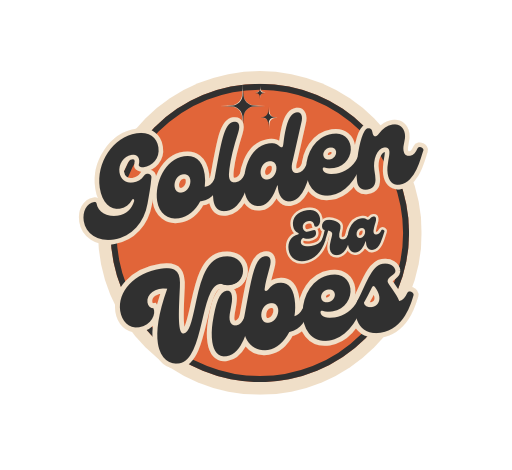15 Forgotten Mall Stores That Were Teenage Heaven In The ’90s

Who could forget the glory days of the mall in the ’90s? Back then, heading to the mall wasn’t just a shopping errand—it was a full-blown event, the highlight of every teen’s weekend agenda.
It was where friendships flourished, crushes were spotted at the food court, and our fashion sense was forged under the glowing signs of stores like Contempo Casuals, Wet Seal, and Hot Topic. We’d cruise past the CD store, trying to look cool while secretly hoping someone noticed our new scrunchie or fresh pair of Skechers.
Every trip was a sensory overload: the smell of Cinnabon wafting through the air, the sounds of coin-loaded arcade machines, and the thrill of spending allowance money on butterfly clips or a graphic tee that screamed personality.
The mall was our stage, our sanctuary, and our style guide—all before the internet took over our wallets and social lives. What a time to be alive!
1. Gadzooks: Where Fashion Met Rebellion

Walking into Gadzooks felt like entering an alternative universe where parents’ fashion rules didn’t apply. I bought my first pair of ridiculously wide JNCO jeans there in 1996, feeling like the coolest kid alive despite tripping over them constantly.
The walls were plastered with band posters, and employees with wild hair colors made you feel instantly cooler just by association. They stocked everything from graphic tees with snarky sayings to those tiny baby tees everyone paired with oversized pants.
What made Gadzooks special was how it perfectly balanced mainstream trends with counterculture edge. You could grab a Sublime t-shirt alongside silver ball chain necklaces and platform shoes. When Forever 21 acquired them in 2005, another piece of ’90s mall culture vanished forever, taking our teenage rebellion headquarters with it.
2. Sam Goody: The Musical Mecca Before Streaming

Before Spotify and Apple Music, we pilgrimaged to Sam Goody with hard-earned cash to buy actual physical music. The excitement of ripping off that annoying security sticker and popping a new CD into my Discman on the ride home was unmatched joy.
Sam Goody wasn’t just about CDs though. Rows of cassette tapes (for your Walkman), band merchandise, and those giant listening stations where you could sample albums before buying made it a music lover’s paradise. My first concert t-shirt came from their back wall – a treasured Nirvana tee that my mom immediately declared ‘too dark.’
The store always smelled like plastic cases and new paper from those giant artist posters everyone plastered on their bedroom walls. When digital downloads started gaining traction in the early 2000s, Sam Goody’s days were numbered, eventually disappearing along with our physical music collections.
3. Contempo Casuals: Clueless Fashion Come To Life

Contempo Casuals was basically Cher Horowitz’s closet from ‘Clueless’ transplanted into every mall in America. My first day of eighth grade involved a plaid skirt and knee socks ensemble straight from their racks – an homage to my fashion icon that earned me both compliments and some serious side-eye from teachers.
Stepping inside meant being bombarded with pastels, mini everything, and those little backpacks everyone wore despite them holding approximately nothing useful. Their dressing rooms always had the coolest lighting that somehow made everything look amazing until you got it home.
Fashion-forward without the designer prices, Contempo mastered the art of making teenage girls feel sophisticated. When Wet Seal acquired them in 1995, slowly rebranding stores to Arden B, we lost our direct pipeline to Hollywood-inspired fashion. No online shopping experience has ever captured that magical feeling of flipping through racks with your best friends, debating which crop top your parents might actually let you wear.
4. Limited Too: The Tween Queen’s First Fashion Stop
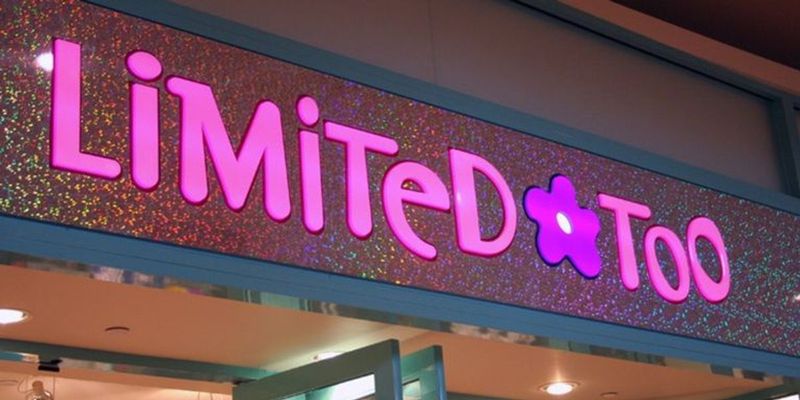
Glitter. Everywhere. Glitter. That’s my most vivid memory of Limited Too, where I spent my awkward years transitioning from kid clothes to ‘real’ fashion. One step inside and you were assaulted by a rainbow explosion of sequined everything, fruity scents, and pop music blasting at volumes that made parents wince.
The store brilliantly bridged the gap between childhood and teen years with butterfly clips, platform sandals, and those iconic logo tees that everyone at school seemed to have. My prized possession was their pastel blue inflatable chair that squeaked embarrassingly whenever anyone sat on it during sleepovers.
Limited Too wasn’t just clothes – it was an entire lifestyle brand selling everything from bedroom décor to body glitter. When it rebranded as Justice in 2008, something magical disappeared from the mall landscape. No other store has quite captured that perfect blend of childhood whimsy and grown-up fashion aspirations that made every tween girl feel simultaneously cool and comfortable.
5. RadioShack: Gadget Paradise Before Smartphones Took Over
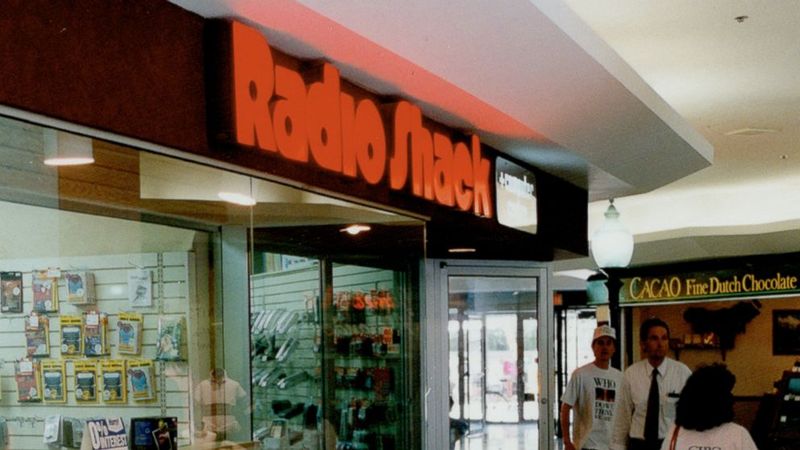
RadioShack wasn’t just a store – it was where tech dreams materialized for ’90s teens. My first splurge purchase was a see-through landline phone that lit up when it rang, making my bedroom feel instantly more grown-up and high-tech.
The store had this distinct smell of plastic, batteries, and possibility. Rows of remote-control cars, personal CD players, and those universal TV remotes that never quite worked right drew in tech-curious teens like magnets. The staff actually knew their stuff too – unlike today where I’m often explaining technology TO the salespeople.
RadioShack existed in that magical era when technology was becoming personal but wasn’t yet overwhelming. You could buy a pager and feel like the coolest kid in school or grab components to build your own speaker system. When smartphones eventually consolidated all these separate gadgets into one device, RadioShack lost its purpose, filing for bankruptcy in 2015. Nothing has replaced that hands-on gadget wonderland where teenagers could touch and explore technology before buying.
6. Spencer’s Gifts: The Store Your Parents Hated

Spencer’s occupied that perfect rebel space in every mall – the store parents rushed past while pretending not to notice their teenagers slipping inside. My first black light poster came from here, transforming my bedroom into what my mom called ‘a hippie nightmare’ but my friends deemed ‘totally awesome.’
Half gag gifts, half questionable merchandise, Spencer’s was where you went for shock value. Lava lamps, edgy t-shirts with phrases that would definitely get you sent to the principal’s office, and an adults-only section in the back that we all pretended not to notice while secretly giggling about. Their novelty mugs and prank items were staples at every slumber party.
Unlike other ’90s stores, Spencer’s somehow survived the retail apocalypse, though with a tamer personality than its boundary-pushing ’90s incarnation. Nothing matched that teenage thrill of buying something mildly inappropriate while hoping not to run into your friend’s parents or, worse, a teacher from school. It was retail rebellion at its finest.
7. Delia’s: The Catalog Come To Life

Before Delia’s opened physical stores, their catalog was the fashion bible that traveled through high school hallways like contraband. I’d circle items with markers, dog-ear pages, and calculate exactly how many babysitting jobs I’d need to afford that perfect baby doll dress.
When they finally opened mall locations, it was like walking into the pages of that magical catalog. Platform sneakers, spaghetti strap everything, those weird stretchy chokers that looked like tattoos, and jeans in every imaginable color lined the walls. The dressing rooms always had the coolest ’90s girl power quotes stenciled on the walls.
Delia’s perfectly captured that sweet spot between grunge and girly that defined ’90s teen fashion. Their clothes made you feel like you could be in a Seventeen magazine photoshoot or hanging with the cool alternative crowd. When online shopping took over and mall traffic declined, Delia’s couldn’t compete, eventually closing physical stores in 2014 – taking with them a piece of authentic ’90s girl culture that Instagram-influenced fashion brands have tried but failed to replicate.
8. Suncoast Motion Picture Company: Pre-Netflix Movie Heaven
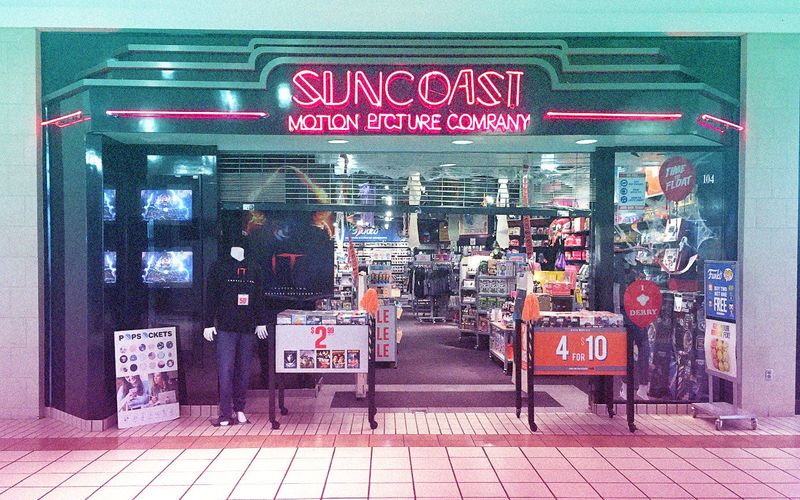
Suncoast was where movie magic lived before streaming services killed the video star. I saved for weeks to buy the special edition VHS of ‘Titanic’ with the holographic cover that I still can’t bring myself to throw away, even though I haven’t owned a VCR in fifteen years.
The walls were lined with movie posters that changed monthly, and employees could actually recommend films based on your taste instead of an algorithm. They stocked everything from mainstream blockbusters to obscure foreign films that made you feel cultured just for browsing them. The glass display cases held movie memorabilia that seemed ridiculously expensive to my teenage budget – like that $30 ‘Nightmare Before Christmas’ figurine I coveted for months.
Suncoast offered something that streaming can’t replace – the physical experience of movie fandom. You could spend hours browsing, reading back-of-box descriptions, and debating with friends which precious selection would go home with you. When digital downloads made physical media obsolete, Suncoast faded away like end credits, taking with it the tangible side of film appreciation.
9. Warner Bros. Studio Store: Looney Tunes Fashion Central

Long before the Disney Store dominated mall cartoon merchandise, the Warner Bros. Studio Store was where animation fans flocked. My prized possession was a Marvin the Martian watch that lit up – totally worth the month of lawn-mowing money it cost me.
The store was an explosion of color and sound, with Looney Tunes characters everywhere you looked. Tweety Bird baby tees, Tasmanian Devil backpacks, and those Bugs Bunny plush toys that said sassy phrases when you squeezed them were must-haves for the cartoon-loving teen. They even sold animation cells from actual Warner Bros. cartoons that seemed impossibly expensive but made you feel like you were looking at pieces of history.
Beyond merchandise, the stores were designed as mini entertainment venues with video screens playing classic cartoons and interactive displays. When Warner Bros. closed all their retail locations in 2001, we lost more than just another store – we lost a celebration of classic animation that introduced a new generation to characters that might otherwise have been forgotten in the pre-streaming era.
10. Waldenbooks: The Bookstore That Made Reading Cool
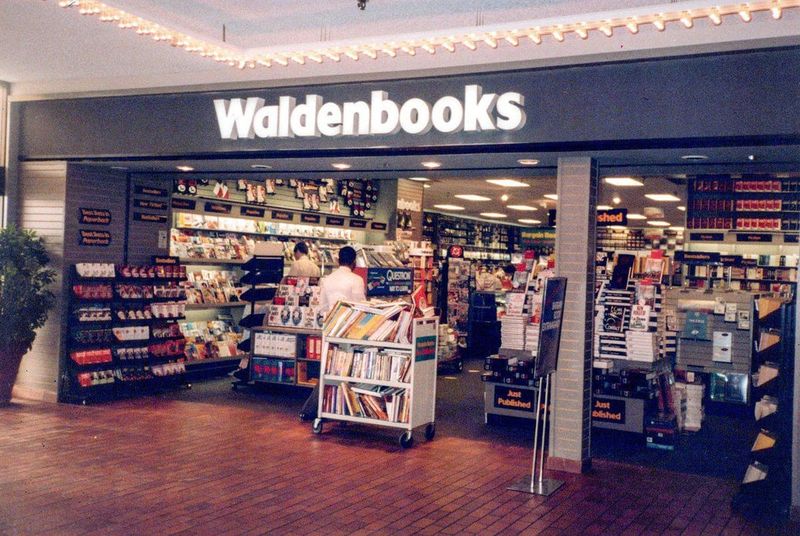
Before Barnes & Noble superstores and Amazon, Waldenbooks was the literary heart of every mall. I spent countless hours hiding in their cushy chairs, reading Goosebumps and Sweet Valley High books I couldn’t afford to buy. The employees never rushed you out, creating a safe haven for bookish teens between arcade visits and food court binges.
Their ‘Buy 4 Get 1 Free’ punch cards were my introduction to loyalty programs, and I guarded those cards like treasure. The store somehow made reading feel rebellious and cool – especially their teen section with covers you didn’t want your parents examining too closely. My first Anne Rice vampire novel came from their shelves, purchased with birthday money and hidden between school textbooks.
Waldenbooks balanced commercial bestsellers with enough literary cred to satisfy pretentious teenage readers like myself. When larger bookstore chains and eventually online retailers pushed them out of business in 2011, malls lost those quiet corners where you could escape the chaos and disappear into stories. No e-reader has ever replicated that new book smell or the thrill of discovering your next literary obsession while killing time at the mall.
11. KB Toys: Chaotic Good In Retail Form
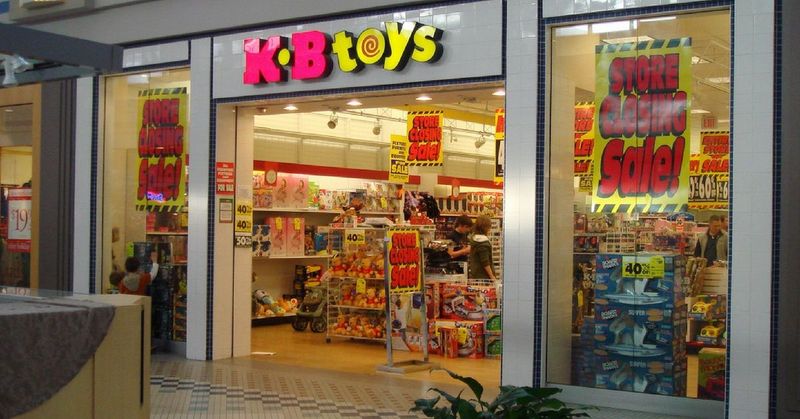
KB Toys was retail chaos in the best possible way – a sensory overload of primary colors, noise, and possibility crammed into a storefront smaller than today’s phone stores. Unlike the organized, museum-like toy stores now, KB had that treasure hunt feeling where you might find anything if you dug deep enough.
The giant bins of discounted action figures were my teenage hunting grounds. Nothing beat the triumph of finding that one Star Wars figure missing from your collection buried under piles of less popular characters. Their video game section was equally magical – rows of cartridges and discs with minimal security, allowing you to actually read the backs before buying.
KB Toys mastered the art of impulse purchases with checkout lines flanked by small toys and gadgets perfect for allowance money. When they filed for bankruptcy in 2009, losing to big-box competitors, we lost more than just a toy store – we lost that chaotic, unfiltered joy of toy shopping that today’s curated retail experiences can’t match. Modern kids will never know the thrill of racing to KB Toys the moment you entered the mall, parents trailing helplessly behind.
12. The Nature Company: Where Science Met Shopping
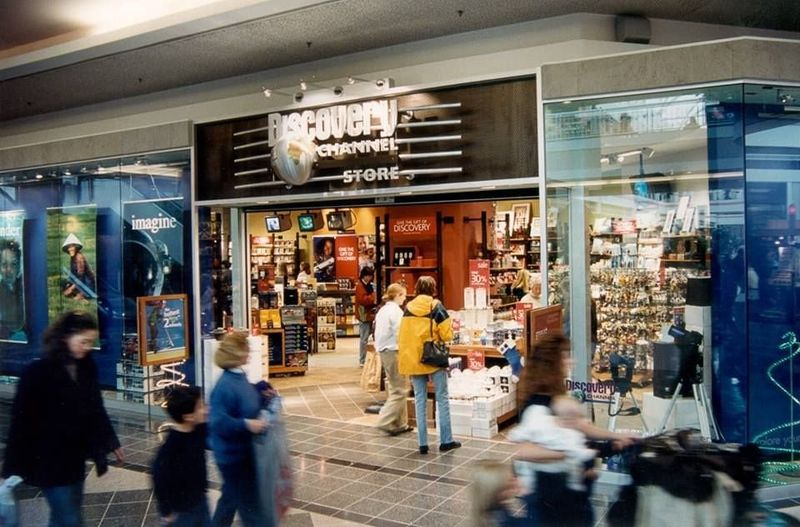
The Nature Company was the store that made science cool before Bill Nye hit his stride. I saved for weeks to buy a geode that the employee cracked open right there at the counter – a moment of genuine wonder that no unboxing video has ever matched.
Unlike other mall stores selling manufactured trends, The Nature Company offered actual pieces of the world – fossils, crystals, and telescopes that connected you to something larger than mall culture. Their rainforest sound machines created the perfect study atmosphere, and those plasma balls where electricity followed your fingertips were the must-have desk accessory for science-loving teens.
The staff actually knew about the merchandise, happily explaining how kaleidoscopes worked or why that particular rock glowed under black light. When Discovery Communications acquired them in the late ’90s, eventually phasing out the brand, malls lost their connection to natural wonder. The Nature Company showed that teenage interests could extend beyond fashion and entertainment to the actual marvels of the physical world – a retail concept that seems increasingly quaint in today’s digital landscape.
13. Sharper Image: Gadgets We Couldn’t Afford But Loved To Try
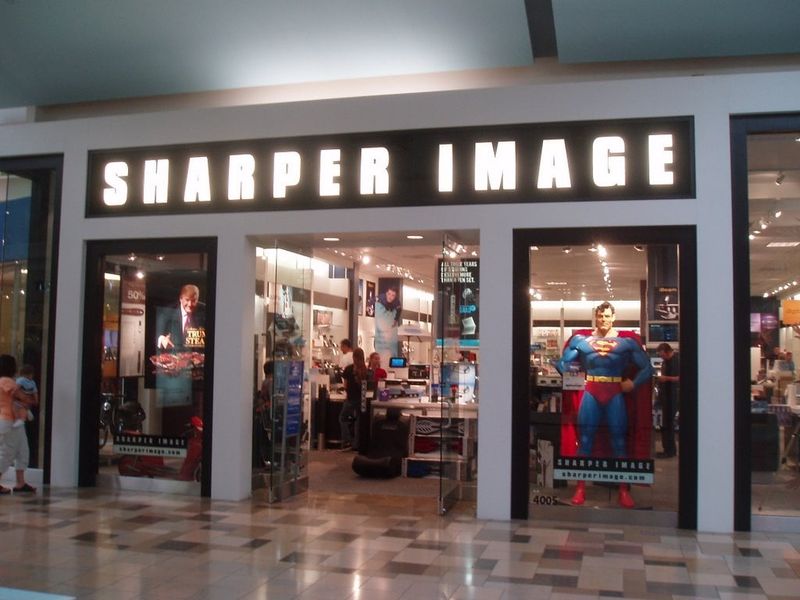
Sharper Image was technically for adults with disposable income, but it was teenage gadget heaven for window-shopping and playing with demos. Those massage chairs were the ultimate mall break spot – I’d collapse into one after hours of shopping, pretending I was seriously considering a purchase while enjoying a free back massage.
Every visit included testing electronic putting greens, noise-canceling headphones that cost more than my monthly allowance, and those desktop water fountains everyone wanted for their bedrooms. The store specialized in solving problems you didn’t know you had with gadgets you definitely couldn’t afford. My friends and I had an unspoken rule that whoever finished shopping last had to be the one to awkwardly tell the hovering sales associate we were ‘just looking.’
The catalog was equally entertaining – full of bizarre inventions like talking bathroom scales and ties with hidden compartments. Though Sharper Image still exists online after its 2008 bankruptcy, the physical stores provided that irreplaceable experience of hands-on play with cutting-edge technology that made us feel simultaneously sophisticated and completely out of our financial league.
14. Hot Topic: The Mall’s Dark Alternative Corner
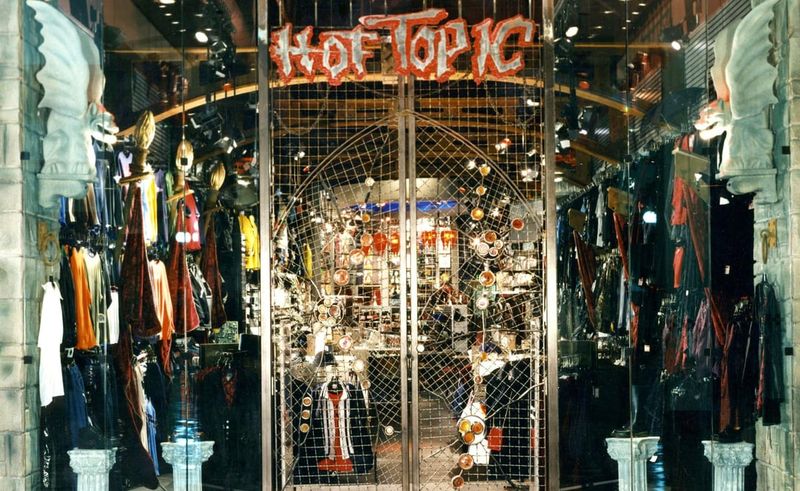
Hot Topic was the retail rebellion headquarters where alternative teens found their tribe among band tees and body jewelry. My first visit felt like crossing into forbidden territory – dark lighting, loud music, and employees with more piercings than seemed physically possible.
Before it became more mainstream, original Hot Topic was genuinely countercultural – carrying merchandise for bands that never got radio play and fashion that would definitely get you sent to the principal’s office. Their wall of studded belts, safety pin accessories, and fingerless gloves provided all the essentials for teenage angst expression. I spent an entire summer babysitting just to afford those massive JNCO-style pants with chains that my mother declared ‘absolutely ridiculous.’
Unlike other ’90s mall staples, Hot Topic survived by evolving – though many argue at the cost of its soul, now selling more pop culture merchandise than alternative fashion. The original stores provided something crucial to ’90s teenage life: a commercial space that acknowledged not everyone wanted to fit in with mainstream culture. For many alternative kids, it was the first place they felt seen and understood in the otherwise conformist mall landscape.
15. Glamour Shots: Where Regular Teens Became Cover Models
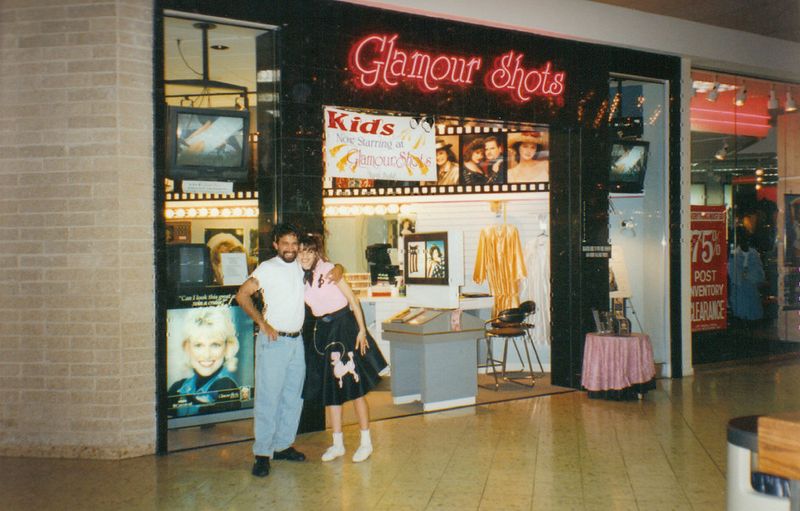
Glamour Shots wasn’t just a photo studio – it was a teenage rite of passage that transformed ordinary mall rats into glamorous, soft-focus versions of themselves. My session involved teasing my hair to impossible heights, applying makeup that would make a drag queen say ‘that’s a bit much,’ and posing with feather boas I would never encounter in real life.
The whole experience was delightfully absurd. They dressed you in off-the-shoulder tops that were actually just regular shirts pulled down, added costume jewelry that turned your skin green by the end of the session, and positioned you in ‘casual’ poses that no human has ever naturally assumed. The resulting photos looked nothing like you – which was entirely the point.
Every ’90s teen bedroom had at least one framed Glamour Shot, usually prominently displayed despite (or because of) its complete departure from reality. When digital photography democratized portrait taking and editing, the magic of these professional transformations faded. Modern selfie filters can’t capture the magnificent ridiculousness of a full Glamour Shots session – the last time many of us felt like genuine celebrities, if only for a 30-minute photo shoot.
